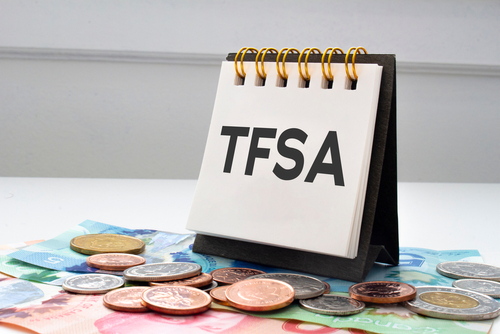Saving for retirement is no easy task, especially with the uncertainty surrounding financial markets and employment. This is why it’s no surprise that over 15 million Canadians have turned to TFSAs to help them plan for future retirement.
Due to the tax advantages of TFSAs, the CRA implements strict policies surrounding contributions, making it important to understand the basics of TFSA contributions, the implications of overcontributing, and how to avoid the penalties of exceeding your contribution room.
What are TFSA Contributions?
Tax Free Savings Accounts, frequently referred to as TFSA, is an account created in 2009 that is designed to help Canadians save for retirement. The money put into a TFSA is not deductible on the tax return; however, you are able to accumulate growth and earnings that are tax-free when the money is withdrawn.
For 2022, Canadians are allowed to contribute $6,000. TFSA rules aren’t that simple with a set contribution threshold as the CRA allows individuals to contribute up to their contribution room. This includes the unused contribution room that is carried forward from one calendar year into the next. In these cases, Canadians can contribute over the initial $6,000 maximum. To make matters even more complicated, you are able to re-contribute any amounts withdrawn in the next calendar year of the withdrawal.
What Happens When You Over Contribute?
As much as technology helps in the everyday tasks of many Canadians, there are some lags, especially in the system that tracks contribution room. TFSA information is not updated in real-time. This causes a problem for taxpayers who rely on the information provided online when it comes to making contributions.
Let’s say you log in to your CRA account to see how much contribution room you have left for the year. The website may say that $1,000 is remaining, but this might not take into consideration the remittance you made last month. If you were to remit a payment for $1,000, you would have overcontributed.
There is a tax equal to 1% of the excess contributions in your TFSA for each month that the excess sits in your account. This means that if you don’t catch the overcontribution timely, you could be met with significant penalties.
How to Avoid Over Contributions?
Avoiding overcontributing to your TFSA account should be a top priority to avoid paying high penalties to the CRA. First, you want to maintain a separate schedule that tracks your contributions, including withdrawals and additional contribution room from year to year. This avoids making investment decisions based on outdated information on the CRA website.
Next, you want to work closely with an accounting professional that can walk you through the next steps in the event that you do overcontribute. In some cases, the CRA may provide a penalty waiver if you are able to prove that the overcontribution was made as a consequence of a reasonable error. Then, you must immediately withdraw the over-contributed amount. If the CRA refuses to grant you penalty abatement, you can take your case to court.
Summary
Understanding the implications of over contributions to your TFSA account is vital to avoid paying penalties out of your hard-earned money. Whether you are looking for expert guidance to help track contribution room or assistance when it comes to penalty abatement, the team at NRK Accounting has you covered. Reach out today for more information.

